Equipment Insight: Skid steers and compact track loaders
New models improve safety, efficiency and productivity.
Skid steer loaders and compact track loaders are popular pieces of equipment to offer in rental fleets. Today’s models are becoming increasingly specialized for higher productivity in a wider selection of jobs.
But with that greater level of specialization, rental centers must consider models that don’t necessarily fall into the one-size-fits-all category. Specialized models can fetch higher rental rates and greater customer satisfaction.
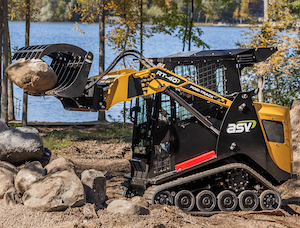 |
|
Machines like the ASV MAX-Series line focus on comfort and minimize operator fatigue, allowing operators to get jobs done faster while enjoying the experience. This increases the likelihood of a return customer and faster ROI on the machine.. |
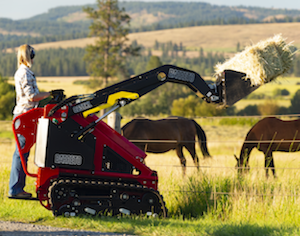 |
|
The Operator Presence Switch is one such essential safety feature on the Barreto 825TKL that automatically senses when the operator steps off the unit and renders the controls inoperable. The sensor, when paired with the intuitive controls and variable high-, medium- and low-speed selections, maximizes safety and handling for even novice users. |
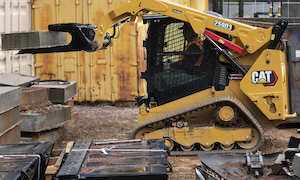 |
| The Cat Dual Direction Self-Leveling system automatically levels the loader linkage when raising or lowering the lift arms. It ensures optimum material retention and load control for truck-loading material or handling palletized products without manual joystick adjustments. |
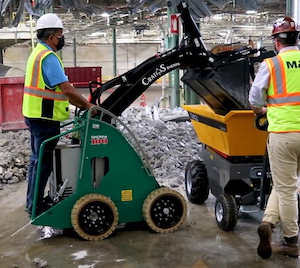 |
|
Cratos Equipment’s 100ECO and 2SPEED skid steers have little to no maintenance requirements, are safer to operate and the cost to charge the equipment is pennies on the dollar when compared with fuel costs for diesel-powered equipment. |
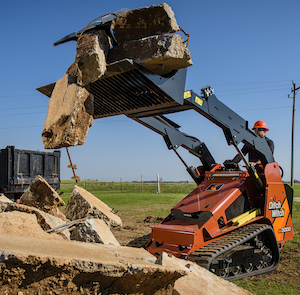 |
| A full-size stand-on skid steer gives operators a 360-degree view of the job site, helping them work more confidently as they move from one project to the next. |
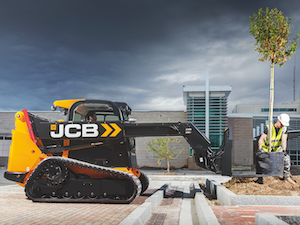 |
| JCB’s skid steers, with their single-arm boom and side-door entry, spares the operator from climbing over a cumbersome attachment or under an unsupported boom to enter or exit the cab. |
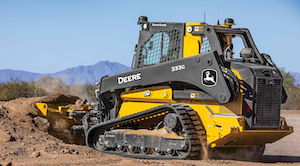 |
| Every skid steer and compact track loader (CTL) John Deere produces is matched to an actual dealer order, so it is truly built-to-order, which makes it easier for the factory to produce high-quality machines that customers expect at a high rate. |
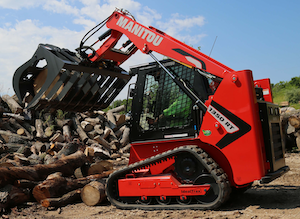 |
| To increase ROI on skid steers and compact track loaders, rental centers should make sure they specify or configure a machine that can be sold to the secondary market. |
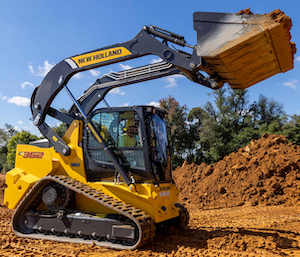 |
| Increasingly, customers are asking for the type of creature comforts we all have become accustomed to in our day-to-day vehicles. |
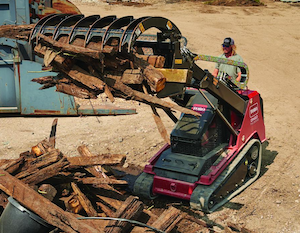 |
|
Customers will easily be able to select the right CUL by considering two factors: ease of use and simple, intuitive controls.
|
Pro Contractor Rentals asked skid steer/compact track loader experts on the trends they see customers are wanting from these units and how rental centers can achieve greater ROI on new units.
Improve the operator experience
 |
|
Buck Storlie |
Many of the advances incorporated into new skid steer and compact track loader models have a focus on comfort to provide a greater operator experience. Instead of pushing only for more power, operators are looking for features to make their days easier while on the job. Things such as more spacious cabs, better legroom and improved visibility are growing in popularity both for increased operator satisfaction and the ability to work longer days with less fatigue.
ASV recently introduced the new Max-Series loaders with operator experience in mind. The Max-Series loaders feature many unique qualities such as an optional pressurized cab that has been seal-tested and offers five times better sealing than other options out there. This is ideal for dusty environments and for keeping warm or cool air in the cab.
The models also feature premium 360-degree visibility with 52 percent more visible area than our previous designs. They include a seat unparalleled in its adjustability, featuring adjustable recline, slide, weight, and four-way arm rest settings; knee, leg and shoulder room is also improved for greater comfort. Finally, the Max-Series models include the industry’s only compact track loader escape hatch, allowing operators to climb out through the roof instead of over the back half of the machine.
There’s also a drive for new technology to make job and fleet management easier. High-tech digital touchscreen displays, like those seen on some of ASV Max-Series models, include operator key codes for login and lockout. They also feature job clocks that can track machine fuel consumption, idle time, run time, service schedules as well as other important items that can improve a contractor’s bottom line.
Rental centers considering bringing additional models into their fleets should consider the trend toward smaller compact track loaders. ASV introduced the smallest sit-in compact track loader two decades ago and continues to hold the spot for the smallest models on the market — the Posi-Track RT-25 and the new Yanmar-powered RT-40 and the RT-50. These machines offer ground pressures as low as 2.8 psi, have operating weights as little as 3,755 pounds and are as compact as 48 inches wide. They can also be easily transported with a 1/2-ton truck.
These small models can do more work in more places, such as between houses in tight neighborhoods without the need to remove sections of fence, and through alleys and on sidewalks. This can open the door to business from weekend warriors and contractors working in tight spaces.
The machines are also extremely user friendly, especially for a first-time user such as a homeowner who may be intimidated by the size of a large or even mid-size machine.
The new ASV RT-135 features the highest horsepower and flow available on a compact track loader, giving it the ability to effectively run high-flow attachments that smaller machines just couldn’t handle. That means rental centers can offer the large track loader as a versatile, much easier-to-use transport alternative compared to a large, dedicated machine.
One of the best ways for rentals centers to increase demand is including features that allow operators to work longer days in comfort. Machines like the ASV MAX-Series line focus on comfort and minimize operator fatigue, allowing operators to get jobs done faster while enjoying the experience. This increases the likelihood of a return customer and faster ROI on the machine.
Consider safe, user-friendly models
 |
|
Tim Phelps |
Advances in the industry have led to greater safety and usability features on skid steers and mini track loaders. Safety is Barreto’s No. 1 priority as a manufacturer, and the most important thing we can do for our customers is provide a safe, quality piece of equipment that brings many great returns over the equipment’s lifetime.
The Operator Presence Switch is one such essential safety feature on the Barreto 825TKL that automatically senses when the operator steps off the unit and renders the controls inoperable. The sensor, when paired with the intuitive controls and variable high-, medium- and low-speed selections, maximizes safety and handling for even novice users.
Especially considering novice users, exceptional track design is essential. Unpredictable use in various field conditions affects the performance of many tracked machines, particularly in reverse and the 825TKL’s unique track shape uses a hydraulic tensioning system that keeps pressure on the tracks when operating in any direction. This eliminates the costly repairs caused by de-tracking, while articulating rollers absorb impact when traversing over uneven ground.
Electronic LCD display and Tip Over Protection are other advanced features that mini skid steer owners expect. The electronic display meets the need to quickly check machine health metrics such as fuel supply, engine oil level and more. Tip Over Protection furthers the owner’s control over the machine by automatically locking the controls and shutting off the fuel supply in the event of a tip-over situation. This prevents engine damage and allows the owner to inspect and secure the machine before unlocking with a code.
When rental centers are considering adding these units to their fleets, they need to consider unit size and lifting capacity; safety and user-friendliness are also key. Will the machine serve your customer well throughout various tasks? Customers respond well to a machine that instills confidence through its ease of operation and simple safety features.
When not out on rental, a machine that is simple to maintain back at the shop will reap the benefits of reduced repair and routine maintenance time. The 825TKL cab-over design provides easy access to complicated in-depth repairs on internal components.
Durability and existing attachments should also come into consideration. Will the machine endure the abuse of rental use and fit seamlessly into your existing fleet, or will you have to repair frequently and buy new attachments just to run it?
Consider skid steer and compact track loaders as long-term investments. It’s easy to buy a cheap machine that fills a gap, but real ROI comes from the combination of durability, clever engineering, user friendliness, reduced downtime through easy maintenance and frequent demand. ROI can be further improved by taking care of your equipment through consistent maintenance that includes regular lubrication, cleaning and checking wear parts. These are all important in keeping any machine in tip-top shape.
Increase demand by purchasing and training on safe, uncomplicated equipment that is reliable in the field. Customers are uncomfortable with equipment they don’t understand, so invest in novice users through training that supports confidence, and impress advanced users with intelligent, modern equipment that keeps them coming back for more. Link customers to operational videos often provided by manufacturers, as these provide quick-start procedures that help with the overall understanding of the machine.
Users want easy-to-use, productive models
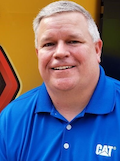 |
|
Kevin Coleman |
One critical consideration is ease of use. Customers are looking for equipment that offers features to help make operation easier and more productive while helping turn a novice operator into a skilled operator. These features can help customers save time and/or make more money by automating repetitive tasks such as grading, digging and loading.
While still reasonably new in the marketplace, these types of labor-saving features have been available on Cat skid steer loader and compact track loader models since 2013 in the form of Dual Direction Self-Leveling, Return-to-Dig and Work Tool Positioning features.
The Dual Direction Self-Leveling system automatically levels the loader linkage when raising or lowering the lift arms. It ensures optimum material retention and load control for truck-loading material or handling palletized products without manual joystick adjustments that are required by “raise only” self-leveling systems.
The Return-to-Dig feature allows the operator to fully lower the loader arms and return the bucket or attachment to a pre-selected angle with the touch of a button. This allows operator to focus on other aspects of the work cycle instead of managing the loader functions, resulting in peak productivity, especially in truck-loading and material-handling applications.
The Work Tool Positioner allows the operator to set the desired working angle/tilt position of any attachment so it returns to the pre-selected angle with the touch of a button. This provides better control and finish quality in applications where a repetitive attachment angle is desired for maximum productivity and consistency. It’s a popular feature in fork operation, trenching, wheel saw cutting/trenching, bucket-back drag angle, cold planer/milling and other tasks.
For rental centers, selecting the proper machine size, type and how to equip them can be challenging. Should the unit(s) be small, medium or large frame? Standard auxiliary flow or high flow? Rubber tire skid steer or compact track loader? Enclosed cab or open canopy? Each of the decisions will influence the return on investment (ROI) via the acquisition cost, maintenance costs, rental rates and the compatible attachments that can be rented with the machines.
Today’s machines are being rented with an ever-growing variety of attachments. At some locations, the focus is small- to mid-sized skid steers and compact track loaders. The mid-sized skid steer and compact track loaders are popular with rental customers due to high performance that is delivered in a relatively compact chassis size. This size is also easy to transport and can maneuver on tight jobsites. The performance they can deliver allows them to be paired with many different attachments, from buckets and forks to the more complex hydro-mechanical attachments for additional versatility. This versatility allows for excellent asset utilization and potentially more revenue for rentals that include multiple attachments.
In some regions, the fleet utilization is increased by including larger machines in the fleet with higher hydraulic power for more demanding tasks such as handling larger loads or for operating large, high-production hydro-mechanical attachments used for brush-cutting or mulching. Consider all these options before deciding what machine type, size and features best suits your business.
Rental centers must strive to attain maximum versatility for minimum investment. Rental centers and customers are looking for ways to do more with equipment to maximize their return on investment, whether that is through new attachments, new technology or both.
Rental centers are also looking for equipment that’s easy for them to maintain after rent, easy for the customer to maintain while on rent, and ways the equipment can be used without damage. Machines that provide in-cab monitoring and messaging to communicate when routine maintenance is required is a huge benefit for the customer and the rental center.
Routine maintenance items, such as cleaning/replacing the engine air filter, should be quick and simple without requiring bolts and panels to be removed. Other routine maintenance items, such as fuel filters or hydraulic filters, should be straightforward to locate and access. Examine the access to check and add fluids. All these lead to improved maintenance of the equipment when on rent and faster turnaround when the equipment comes off rent.
To help protect the investment, the Cat skid steers and compact track loaders deliver a rear-view camera image that is viewable on the in-cab monitor. This provides excellent visibility to objects low to the ground in the hard-to-see areas behind the machine. The rear-view camera gives operators more confidence about machine surroundings, allowing them to work confidently and safely while avoiding items that could be damaged on the job site or potentially damage the machine. For the rental center, it can help avoid machine damage that could also affect rental rates and potential future rentals.
Rental centers are also recognizing the value that the track machine provides vs. a comparable sized skid steer. Compact track loaders (CTLs) offer higher rated operating capacity, more stability, lower ground pressure, less ground disturbance and a broad range of application capabilities vs. a rubber-tired skid steer. Cat CTLs are well suited for a rental situation where it is difficult to control the application, material, maintenance and operating technique of rental customers. The durable, steel-embedded track and steel undercarriage components offer maximum life for rental centers. The Cat CTLs also feature a standard torsion suspension undercarriage that helps provide longer track life, improved traction, increased operator comfort and better material retention for longer, lower cost life.
Not all skid steers are created equal
 |
| CEO and Founder Alex Berg Cratos Equipment |
Cratos Equipment isn’t just looking to outsell the competition on skid steers. It’s leading the charge in bringing advances to equipment used in the construction and demolition industry. Questions about such a mission will arise and Cratos is ready to address them.
At Cratos, the answer is electric power to address user challenges and concerns. Electric equipment is just as strong, but minus the limitations found with fuel-powered equipment that releases harmful emissions, which limits it to outdoor use. Electric equipment can be operated safely indoors without subjecting workers to carbon monoxide exposure.
Electric equipment also operates quieter. This often goes overlooked, but according to the CDC, around 14 percent of construction workers have difficulty hearing and 7 percent have tinnitus. Diesel-powered equipment is loud, producing sound levels anywhere from 80 to 120 decibels. Exposure to sound levels at 80 decibels for extended periods of time can result in irreparable hearing damage. Electric equipment produces sound levels around 70 decibels, which is falls into the safe zone for hearing protection.
Operating battery-powered equipment is also less jarring for laborers because there is no combustible motor creating harsh vibrations. While these vibrations may not pose a great safety risk on their own, it does become fatiguing to operate. As fatigue increases, the quality of work decreases. With electric equipment, it’s a smoother ride, requiring only the use of levers and buttons to accomplish hours of work in half the time, while laborers remain fresh and ready to work.
When rental centers are considering to onboard electrical skid and compact track loaders in their fleets, it’s important to keep it simple. First, learn what customers intend to use the equipment for, or what they would like to be able to do if they had the right equipment. For example, electric equipment can be used indoors and outdoors. That can open up types of jobs for contractors.
Remember, rental equipment users want to make money. Everyone is trying to be more profitable. With diesel-/fuel-powered equipment, users are limited on where this equipment can be operated. Plus, these units have maintenance costs, safety risks and fuel cost. Battery-powered equipment eliminates all of these. Cratos Equipment’s 100ECO and 2SPEED skid steers have little to no maintenance requirements, are safer to operate and the cost to charge the equipment is pennies on the dollar when compared with fuel costs for diesel-powered equipment. When the cost of operation is considered, electric units can increase profits exponentially.
While electric equipment is relatively new, especially to the construction and demolition industry, this industry is slow to change, but the last five years has shown this is a change that will happen. Rental centers can increase demand by continuing to communicate what matters to rental customers the most: profits. Electric equipment reduces operating costs and introduces profitable opportunities they would not otherwise have, such as working in indoor job sites.
Stand-on skid steers boost productivity
 |
| Compact Equipment Product Manager Brant Kukuk Ditch Witch |
While compact tool carriers, or what Ditch Witch calls stand-on skid steers, have been used primarily as loaders in the past, their popularity for a variety of landscape, hardscape, tree care and utility installation tasks continues to increase. They offer more power, increased maneuverability and improved visibility to help customers maximize jobsite efficiency.
As job sites get tighter and more confined, OEMs are designing compact machines that enable operators to be more efficient and productive. A full-size stand-on skid steer gives operators a 360-degree view of the job site, helping them work more confidently as they move from one project to the next. For example, the machine’s increased visibility and maneuverability can help landscapers effectively move through fences, around sheds, gardens or other structures to help minimize costly downtime as well as property damage.
Additionally, with the machine’s narrow, compact design and open cab, stand-on skid steers enable operators to effectively maneuver around fragile and challenging job sites. For example, when working in yards or on landscaping projects, operators need to be conscientious of their surroundings.
To keep lawns pristine, operators often drag debris and material on and off the job site in reverse, rather than making a sharp turn on the turf to exit moving forward. Stand-on-on skid steers have the same ground speed going forward as they do backward, so operators can stay efficient regardless of the direction of travel.
Stand-on skid steers enable operators to quickly jump on and off the operator platform whenever needed. This is especially important for operators as crews are more often smaller, and they can transition between operating the machine and hopping off to help complete tasks, increasing productivity.
When considering what new stand-on skid steer models to bring into a rental fleet, rental centers need to consider the different project needs of their customers. Some key factors that impact what customers are looking for include seasonal activities and ground conditions. For instance, customers in Wisconsin will be looking for stand-on skid steers that can handle winter conditions, such as snow removal and frozen ground, while customers in Georgia might be more focused on year-round landscaping tasks and green industry-related projects.
Additionally, understanding customer project needs will help rental centers select new machines with the correct size and power necessary to keep their customers efficient. For example, landscape crews may be working in space-restricted areas such as residential backyards, meaning they may be looking for a machine compact enough to maneuver in those areas. In contrast, a hardscape crew may be moving heavy pallets and looking for a machine with maximum power and size to move material around the job site. A variety of machine power and sizes will ensure rental centers can provide customers with a machine that can help them complete any job.
Another consideration that is sometimes overlooked is machine maintenance. Rental centers will want to bring machines into their fleet that require easy, minimal maintenance. Minimizing the time spent on maintenance allows rental centers to focus on helping their customers select the right equipment for their unique jobs.
To increase demand and ROI of stand-on skid steers, rental centers need a wide range of attachment options. The combination of various tools suited for a skid steer means that these machines can be used by plumbers, arborists, landscapers, fence builders, electricians, general contractors and utility company crews, along with DIY homeowners.
The standard rule of thumb is that an operator should have three industry-specific attachments to succeed in a particular industry. For example, if a contractor is looking to get into underground road work, he or she should consider investing in microtrenching attachments, coring attachments and vacuum-lifting attachments, in addition to standard forks, buckets and grapples. This attachment arsenal offers the ability to bid on the widest range of jobs and will allow them to handle any difficulties a job may throw at them.
Telescoping boom improves visibility
 |
| Ethan Clowes Product Manager, Skid Steer/ Compact Track Loaders JCB North America |
JCB teleskid models are the world’s only skid steer loaders and compact track loaders featuring a single-arm, telescoping boom, the JCB Powerboom, which o?ers enhanced operator safety with 60 percent better visibility than competing loaders. Given the realities of a newer, less experienced workforce, rental equipment companies must consider worker safety now more than ever.
NIOSH reports that 78 percent of all skid steer fatalities involved pinning an individual between the loader bucket and the frame, or between the lift arms and the frame. JCB’s skid steer line addresses this concern with its single-arm boom and side-door entry, which spares the operator from climbing over a cumbersome attachment or under an unsupported boom to enter or exit the cab.
The JCB teleskid series features three models: the 3TS-8T compact track loader with a rated operating capacity of 3,695 pounds; the 3TS-8W wheeled skid steer with a rated operating capacity of 3,208 pounds; and JCB’s smallest teleskid, the 2TS-7T with a rated operating capacity of 2,069 pounds. With an operating weight of less than 10,000 pounds, it doesn’t require a CDL Class A license to transport.
In addition to rated operating capacity and performance, a rental center management team that is considering adding units to the fleet should also evaluate the serviceability of a skid steer loader or compact track loader. JCB teleskid series models feature the best-in-class serviceability when measured against SAE standards, translating to increased availability for rental customer use. Again, the units should be evaluated for simple, safe operation, given that today’s operators may be less experienced or less familiar with the particular machine being used.
Rental ?eet managers should seek to provide customers the ability to control skid steer loaders and compact track loaders across an ever-expanding range of applications. With JCB myChoice controls, operators can select from three distinct modes which are customizable through the display to better optimize operation according to application.
JCB LiveLink is a great way to improve ROI with better attention to maintenance. This telematics program empowers a ?eet manager to monitor machine health and performance as well as plan maintenance schedules for greater e?ciency. JCB LiveLink also provides critical machine alerts when non-routine maintenance is required.
At the same time, JCB understnds ?eet managers don’t need a terabyte of data every week from their machines and has adopted a “No Data without Action” philosophy. JCB LiveLink allows rental companies to select which alerts they want to receive and routes alerts directly to the service department for proactive assistance. <
Supply chain challenges availability
 |
|
Derek Betcher |
John Deere is focused on bringing smart, reliable compact construction equipment to market that can help customers be successful in their businesses. Deere’s fully integrated SmartGrade CTL is one of the brightest examples of offering a special level of productivity.
This premium package has not been widely adopted in the rental market yet, where typically there is greater emphasis on machines that are rugged, reliable, easy to operate and ready for the next rental.
One area in 2022 where Deere can help do this is by trying to meet surging demand for compact equipment in most of its markets, including rental. There are a handful of projects underway designed to streamline ordering and production and Deere is also pruning a handful of low-popularity options to help increase total output. Every skid steer and compact track loader (CTL) John Deere produces is matched to an actual dealer order, so it is truly built-to-order, which makes it easier for the factory to produce high-quality machines that customers expect at a high rate.
One of the top considerations for an independent rental company evaluating compact equipment choices in 2022 needs to be availability. That is going to be one of the top stories of the year for fleet planning. North American demand is very strong and it is going to be an exciting challenge to produce enough equipment to meet that demand.
There were some optimistic forecasts in the general press for supply chains and production to catch up to demand in the second half of 2022. Here at Deere, we are expecting to see record strong order activity well into next year. Dealers need inventory to sell; customers need product to work; and independent rental centers (IRCs) need products to rent. In this extended availability environment, it will be to IRCs’ advantage more than ever to put effort into forecasting and planning ahead. It’s important to work with a dependable dealer or a manufacturer that is good at communicating what they have, when they’ll have it, and at what price effective date. Eliminating some of that uncertainty in fleet planning will be at least as important as particular features.
We are seeing some examples of IRCs extending their replacement cycles and pushing out fleet disposals. On one hand, it makes sense not to sell off the aging fleet until the replacement orders are received. On the other hand, if an IRC is going to run an aging fleet, that will make good maintenance and repair practices even more important than ever. With parts shortages appearing at times in the industry, that is no easy task. <
Designing equipment for labor retention
 |
|
Nathan Ryan |
All OEMs have been focusing on the human/machine interface and operator cab refinements for the last few years. They have been doing this for a few reasons with the main idea centered around operator retention. As the labor shortage continues in the construction industry, it is a major priority for contractors to keep workers and have equipment that is easy for operators to intuitively understand.
A better cab design also improves equipment resale value. Equipment owners are expecting their machines to be as nice as their trucks in terms of comfort and electronics. Another area of focus for the past few years has been telematics for better fleet management, proactive maintenance and a logistics standpoint.
As rental centers consider adding units to their fleet, they should consider resale value. They need to make sure that the skid-steer or tracked models are equipped with options that are popular on the second-hand market. With that, they should consider the total cost of ownership (TCO), making sure they don’t get caught into buying bigger machines than what is actually needed for their rental applications.
Bigger machines require larger trailers and require employees with additional driving certifications. Smaller machines can do a majority of the same jobs with a little extra time. Finally, if a rental center is considering adding other OEMs to their fleet, they need to consider parts and maintenance commonality to support the range of machines in their fleet.
Rental centers should also be using the telematics systems to coordinate their machine usage and easily manage the time their machines are free (not scheduled for rental) to maintain a better rental schedule.
Rental centers should also consider their tire choices when ordering new units. Solid tires can be a great option to provide wheels for the life of the rental machine.
To increase ROI on skid steers and compact track loaders, rental centers should make sure they specify or configure a machine that can be sold to the secondary market. Routine maintenance should be performed to keep the machine in optimal shape. For example, Manitou’s IdealTrax automatic track tensioning system is a great way to ensure proper maintenance without extra manpower effort.<
Be positioned to offer what customers expect
 |
|
Ryan Anderson |
New Holland engineers and marketers conduct surveys on a regular basis to hear what new features customers desire. Increasingly, they are asking for the type of creature comforts we all have become accustomed to in our day-to-day vehicles.
To meet customer expectations, more user interface with the machine allows them to adjust the equipment controls. Electro-hydrostatic (E-H) controls have become very popular. They feature multiple speed and sensitivity settings that allow operators to personalize the controls with the settings that are the most efficient and comfortable.
Drive control, forward and reverse, and turning can be tweaked to match the job and the operator. An operator can also adjust the speed and sensitivity of loader control, such as bucket and boom arm control, as well.
There are all types of engine settings available, such as economy mode and ignition time out. In the economy mode, the operator can set a time limit for how long the unit idles without an operator in it. When it reaches that preset time, it will power down to save fuel and wear and tear on the engine. With ignition time out, if the electronics and the battery are still on but the engine is not, the electronics will automatically shut down to conserve battery life, based on the time set by the operator.
With a large LED screen display, the customer can easily make those types of adjustments to customize the controls. They can also adjust the auxiliary flow output from one to 100 percent for hydraulic attachments using the LCD display, as well as monitor service intervals.
Ergonomics – the way controls are set up inside the cab with everything within the operator’s field of vision – is a big deal for rentals. All the controls should be in front of the operator between the A and B posts of the machine so the operator is not looking for controls under his elbow, behind his head or elsewhere. For less experienced operators, weekend warriors or contractors who have employees with a variety of skill levels, good ergonomics is a big advantage for improving the learning curve on getting comfortable with running the machines.
The other point on making an operator with any level of skill more comfortable operating a machine is visibility to the front, rear and sides of the machine without towers that block the operator’s vision. To comfortably navigate the machine around the job site, operators need to have the best visibility to everything around them.
Outside of having enough machines in the rental center’s fleet, it’s important to place equipment out in front of the rental center to let everyone know what is available for rent. Having a good quantity of machines in your fleet to accommodate the needs of your customers is a good step to increase demand.
It’s important to manage customer expectations of what the equipment and the machine size can do vs. what the customer is trying to do. You don’t want to send out the largest machine to someone who is just trying to move some dirt around his or her property.
If the renter is looking for heavy lifting capacity and heavy auxiliary output for attachments, that requires a larger machine.
Having a wide variety of attachments will also increase demand. The skid steer or compact track loader is just a tool. It’s a good dirt mover, but it’s also a power unit base for many different attachments. With a good breadth of attachments – Harley rakes, grapple buckets, rotary cutters, snow removal equipment, any type of tree moving attachments – rental centers will increase demand and ROI, not only on attachments but by increasing investment in the usage of that power unit.
Preventive maintenance and making sure you’re staying on top of the equipment per the operator’s manual is critical to achieve high ROI for rental houses.
Electric power gains momentum
 |
| Jay Thaker Marketing Manager Toro |
Toro engineers and marketers are seeing a big emphasis on electric power and true versatility of use throughout the industry. Customers are looking for equipment that can go anywhere they need, whether that’s outdoors or indoors, thus increasing the potential return on equipment.
These advances include the Li-ion battery-powered Toro e-Dingo, which allows end-users to realize the benefits and power of a standard compact utility loader for tasks that require heavy or continuous operation for indoor applications.
These advances are great for the environment and are also advantageous for customers. Bringing the power and versatility of a compact utility loader (CUL) indoors increases productivity for many tasks that are typically performed manually. With a maximum operating capacity of 515 pounds, users will be able to reduce labor and hauling time with the Toro e-Dingo.
CULs are incredibly versatile and can simplify construction, demolition, landscaping and hardscaping tasks. Contractors and homeowners looking to rent a CUL want a machine that is helpful for a variety of jobs, everything from tilling, hauling material, trenching and breaking up material. A CUL can and should function as an additional and much stronger set of hands that will simplify many projects on the job site.
Customers will easily be able to select the right CUL by considering two factors: ease of use and simple, intuitive controls. These two components will allow customers to get right to work without needing to figure out the machine itself.
In addition, it’s important to consider any additional tasks that can be completed through attachments or options. For example, a Toro Dingo with the right attachments can replace a dedicated trencher, tiller, auger and more. Toro offers more than 35 different Dingo attachments, including multiple bucket options, adjustable forks, tiller, hydraulic breaker, grapple, leveler, trencher, floor scraper and an auger attachment, just to name a few.
Customers look for rental centers to be experts when it comes to equipment and best practices. Knowing the possibilities and limitations of equipment offerings is essential. CULs can instantly increase productivity of any project, and with intuitive controls, can be operated by almost anyone, no matter his or her level of experience. Ensuring customers are aware of the flexibility and ease of use of CULs can increase demand, and ultimately ROI.
In addition, asking the right questions and encouraging the customer to be as transparent as possible about the specifics of his or her project can help build trust and match the right piece of equipment to the job. Listening to the customer and offering advice when appropriate will help the rental house earn trust and encourage customers to come back for any project they may be undertaking in the future.
###
This article originally appeared in the May-June 2022 issue of Pro Contractor Rentals magazine. ©Urbain Communications LLC. all rights reserved.








